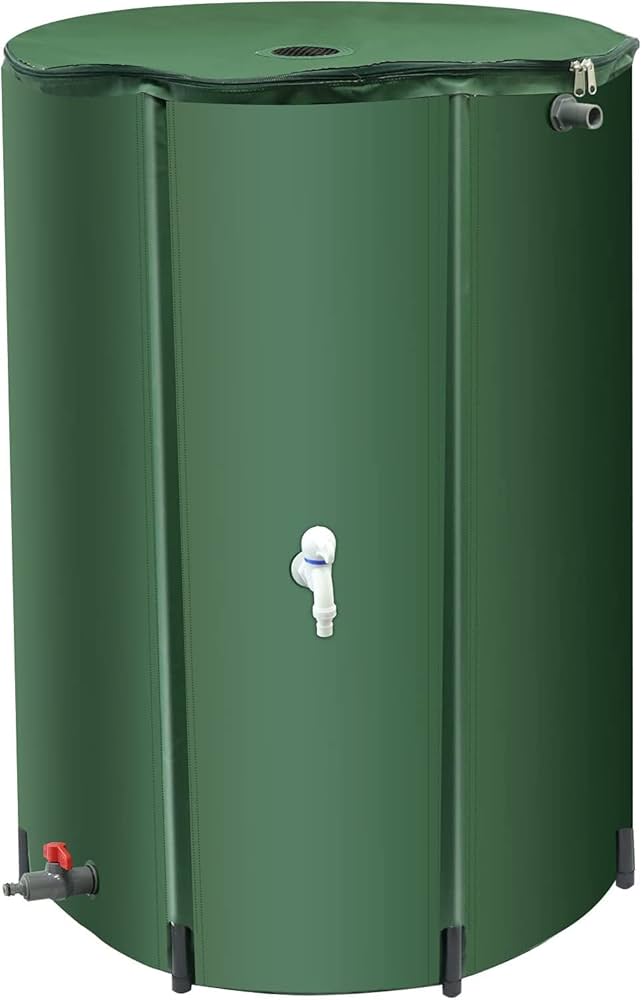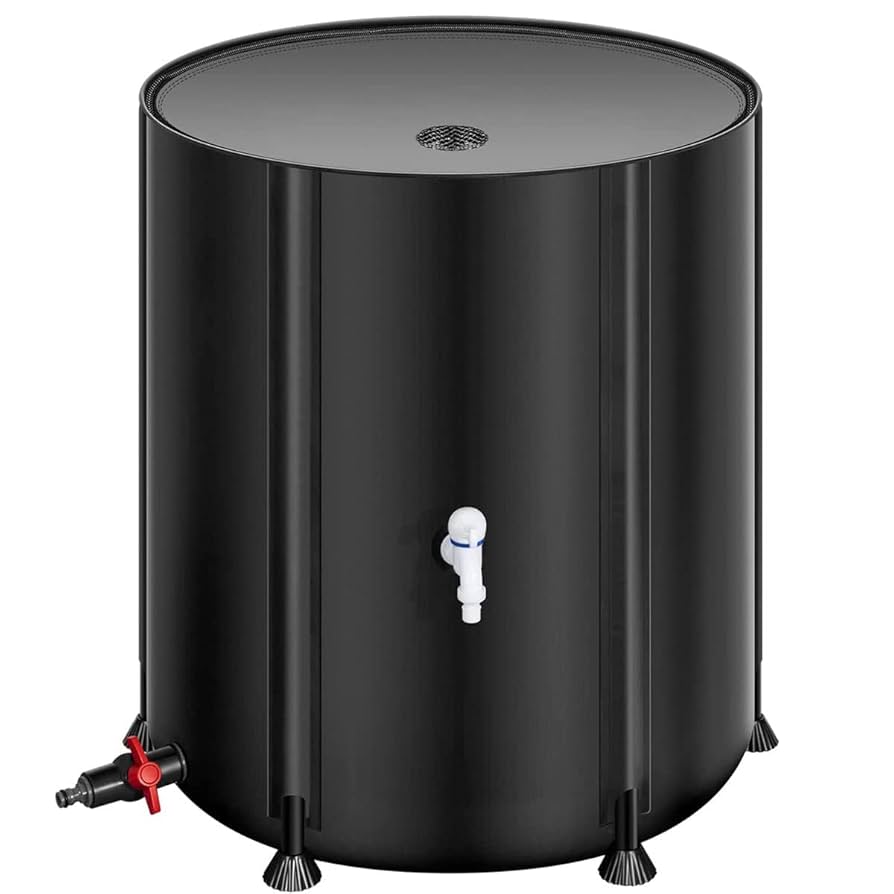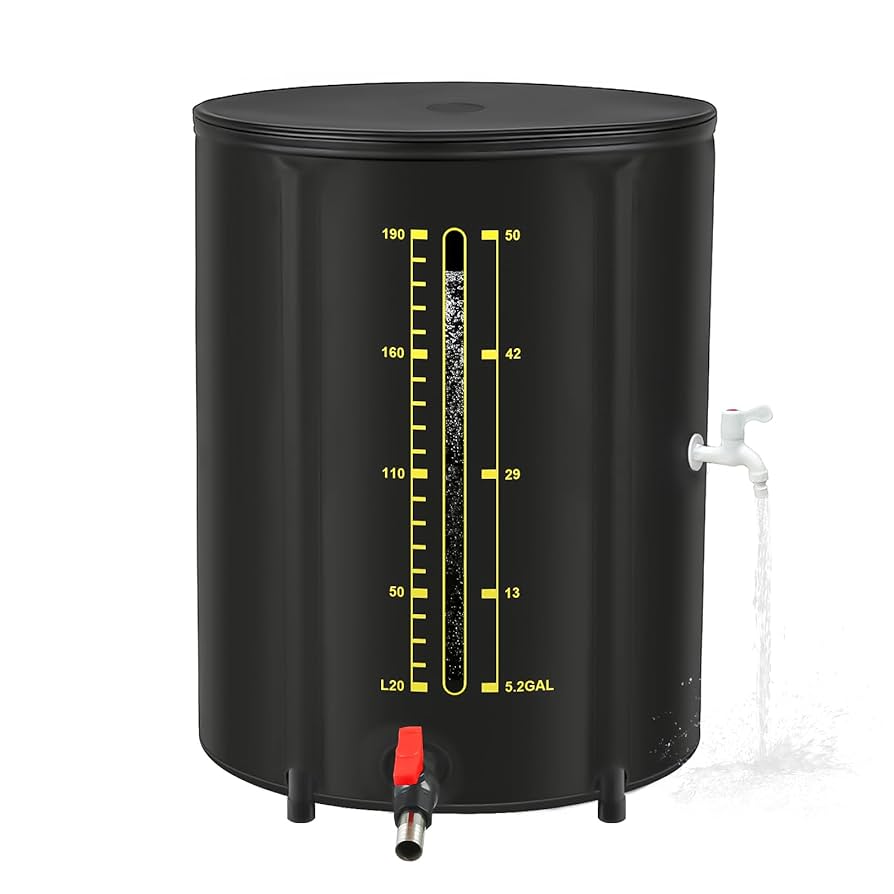Are you looking for a simple way to save water and cut down your utility bills? A rainwater harvesting barrel with filter could be the perfect solution for you.
It lets you collect clean rainwater right from your roof, giving you fresh water for your garden, cleaning, or even emergency use. Imagine having a steady supply of water that’s free and eco-friendly. You’ll discover how these barrels work, why the filter matters, and how you can easily set one up at home.
Keep reading to learn how you can turn rain into your most valuable resource.
Benefits Of Rainwater Harvesting
Rainwater harvesting barrels with filters offer many benefits. They collect and store rainwater safely for many uses. This helps people save water and reduce waste. Using filtered rainwater supports a cleaner environment and lowers water bills. Here are some main benefits of rainwater harvesting.
Water Conservation
Rainwater harvesting saves a lot of water. It collects rain that would otherwise run off. This water can be used for gardening, cleaning, or flushing toilets. Using stored rainwater lowers demand on public water supplies. This helps protect natural water sources from drying out.
Cost Savings
Collecting rainwater reduces monthly water bills. Less dependence on tap water means paying less to water plants or wash cars. Over time, these savings add up. Installing a barrel with a filter is an affordable way to cut water costs. It is a smart investment for home water use.
Environmental Impact
Harvesting rainwater reduces pollution in stormwater runoff. It prevents dirt and chemicals from washing into rivers and lakes. Using rainwater lowers the energy used to treat and pump municipal water. This reduces carbon emissions and helps fight climate change. It also protects local ecosystems and wildlife.

Credit: www.amazon.ca
Choosing The Right Rainwater Barrel
Choosing the right rainwater barrel is key to effective water harvesting. The right barrel stores clean water safely and lasts a long time. Several factors affect the choice, such as material, size, and where to place it. These details help make the best decision for your home and garden.
Material Options
Rain barrels come in plastic, wood, and metal. Plastic barrels are lightweight and resist rust. They are easy to move and clean. Wooden barrels look nice but may rot over time. Metal barrels are strong but can rust without coating. Choose a material that fits your budget and climate.
Capacity Considerations
Barrels hold from 30 to 100 gallons or more. Think about how much water you need. Small barrels fit tight spaces but fill quickly. Large barrels store more water but need more room. Match the size to your garden’s water use and roof size.
Placement Tips
Place barrels near downspouts to catch water easily. Make sure the ground is flat and firm. Avoid shady spots to prevent algae growth. Elevate the barrel for better water flow. Keep the barrel away from children and pets.
Types Of Filters For Rainwater Barrels
Rainwater harvesting barrels need filters to keep water clean. Filters stop dirt, leaves, and bugs from entering the barrel. Choosing the right filter helps protect your water and makes it safe for plants or other uses. Different filters serve different purposes. Understanding the types of filters helps you pick the best one for your barrel.
First Flush Diverters
First flush diverters remove the first water from the roof. This water often has dirt, dust, and bird droppings. The diverter sends this dirty water away from the barrel. It lets cleaner water flow into the barrel. This simple tool improves water quality before it enters the storage.
Mesh Screens
Mesh screens block large debris like leaves and twigs. They sit on top of the barrel or at the gutter. The screen stops big particles from entering the water. Mesh screens need regular cleaning to work well. They are a basic and cheap way to filter rainwater.
Activated Carbon Filters
Activated carbon filters remove odors and chemicals. They trap small particles and improve water taste. These filters are good for garden use or washing. Carbon filters need replacement after some time. They add an extra layer of cleaning to rainwater harvesting.
Installing A Filtered Rainwater Barrel
Installing a filtered rainwater barrel helps collect clean water for your garden or home use. The filter removes leaves and dirt before water enters the barrel. This process keeps water fresh and reduces clogging. Follow these simple steps to set up your filtered rainwater barrel correctly.
Preparation Steps
Choose a stable, flat spot near your downspout. Clean the area to avoid debris under the barrel. Gather tools: drill, screws, filter kit, and a rain barrel. Check the barrel for any cracks or damages. Ensure the barrel has a lid to prevent mosquitoes.
Connecting Gutters
Cut the downspout where you want to install the barrel. Attach a diverter or elbow pipe to guide water into the barrel. Secure the connection with screws or brackets. Make sure water flows smoothly without leaks. Position the barrel so water fills it easily.
Filter Setup
Install the filter on top of the barrel or at the downspout entrance. The filter stops leaves, twigs, and dirt from entering the barrel. Clean the filter regularly to keep it working well. Use a fine mesh filter for best results. Check the filter after heavy rain to clear any blockages.
Maintenance And Cleaning
Maintaining and cleaning your rainwater harvesting barrel with a filter is key. It keeps water clean and extends the barrel’s life. Regular care prevents clogging and contamination. Simple steps make a big difference in water quality.
Regular Filter Replacement
The filter traps dirt and debris. Over time, it clogs and stops working well. Change the filter every 3 to 6 months. More often if you see slow water flow. Use the filter type recommended by the barrel maker. Clean filters help keep water fresh and safe.
Barrel Cleaning Techniques
Clean the barrel at least once a year. First, empty all the water. Use a brush to scrub the inside walls gently. Avoid harsh chemicals that can harm plants if you reuse the water. Rinse thoroughly with clean water. Let the barrel dry before refilling it.
Preventing Algae Growth
Algae grows in light and warm water. Keep the barrel in a shaded area to reduce sunlight. Use a dark-colored barrel to block light. Tighten the lid to stop debris and insects. Clean the barrel regularly to remove algae buildup. These steps keep your water clear and healthy.

Credit: www.amazon.ca
Using Harvested Rainwater Safely
Using harvested rainwater safely is very important for health and hygiene. Rainwater barrels with filters help remove debris and some contaminants. Still, you must check the water quality often. Knowing how to use this water safely protects you and your family.
Water Testing Methods
Test harvested rainwater regularly to ensure it is clean. Use simple test kits for bacteria and chemical levels. You can buy these kits online or from garden stores. Send samples to a lab for detailed analysis if needed. Testing helps detect harmful substances early.
Suitable Uses
Filtered rainwater is great for watering plants and gardens. Use it for washing cars and outdoor cleaning too. Avoid drinking or cooking with rainwater unless tested safe. Use it for flushing toilets or laundry to save tap water. Safe use reduces health risks and saves money.
Health Precautions
Keep barrels covered to stop insects and dirt from entering. Clean barrels and filters regularly to avoid algae and bacteria growth. Do not drink rainwater without proper treatment. Use a fine filter and disinfect if you want to drink it. Teach family members about safe rainwater use.
Troubleshooting Common Issues
Troubleshooting common issues in rainwater harvesting barrels with filters helps keep the system working well. Problems may reduce water quality or stop the flow. Fixing these issues ensures clean water and a long-lasting barrel. Here are some common problems and simple solutions.
Clogged Filters
Filters catch dirt and debris to keep water clean. Over time, they may clog and block water flow. Clean the filter regularly by removing it and rinsing with water. Use a soft brush if needed to remove stubborn dirt. Replace the filter if it is damaged or too dirty.
Leaks And Repairs
Leaks can waste water and cause damage around the barrel. Check all joints, hoses, and the barrel itself for cracks or holes. Use waterproof sealant or tape to fix small leaks. Replace any broken parts quickly to stop leaks from growing worse.
Mosquito Control
Standing water can attract mosquitoes to breed. Keep the barrel covered with a tight lid or fine mesh screen. Empty the barrel occasionally if not in use for long periods. Use natural mosquito repellents or add mosquito dunks to the water to stop larvae growth.

Credit: www.amazon.ca
Frequently Asked Questions
What Is A Rainwater Harvesting Barrel With Filter?
A rainwater harvesting barrel with filter collects rainwater and removes debris. It stores clean water for gardening, cleaning, or irrigation. Filters improve water quality and prevent clogging. This system conserves water and reduces utility bills effectively.
How Does The Filter In A Rain Barrel Work?
The filter traps leaves, dirt, and insects before water enters the barrel. It allows clean rainwater to flow through while preventing contaminants. This ensures stored water remains cleaner and safer for outdoor use. Filters require regular cleaning to maintain efficiency.
Why Use A Rain Barrel With A Filter?
Using a filtered rain barrel saves water and protects plants from harmful debris. It improves water quality by removing impurities. This system reduces dependence on municipal water and supports sustainable gardening. Filters also prolong barrel lifespan by preventing clogging.
Can Filtered Rainwater Be Used For Drinking?
Filtered rainwater in barrels is generally not safe for drinking without extra purification. The filter removes debris but not harmful bacteria or chemicals. Additional treatments like boiling or UV purification are needed for potable use. Use filtered rainwater mainly for irrigation or cleaning.
Conclusion
Rainwater harvesting barrels with filters save water and reduce waste. They keep water clean and ready for gardening or cleaning. Using filtered rainwater helps protect plants and your home. It lowers your water bills and supports the environment. Setting up a barrel is simple and cost-effective.
Start collecting rainwater today for a greener tomorrow. Small steps make a big difference. Why wait? Try rainwater harvesting now.
